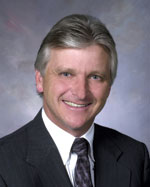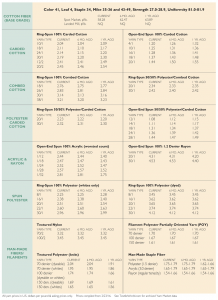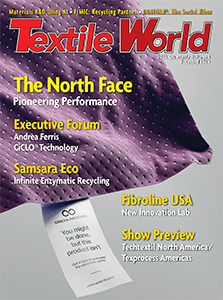LOGAN, Utah — February 25, 2016 — A Utah State University researcher has taken a big step toward making a safer, more natural dye that can be used in the food, textile, cosmetic and other industries.
Dr. Jixun Zhan, an associate professor of biological engineering at USU, has secured a patent for an innovative method to produce the deep blue dye known as indigoidine. The tint was originally synthesized from a bacterial strain found in Rhode Island and offered a promising alternative to the synthetic dyes used to color jeans, leather, food, beverages and paper.
The bacterium itself, however, does not produce significant quantities of indigoidine, so Zhan proposed mimicking the organism’s biosynthetic machinery inside a heterologous host cell: E. coli. These mostly harmless bacteria can churn out significantly higher yields of the blue pigment and provide an efficient way to produce the dye without using synthetic compounds that could pose a threat to human health and the environment.
“In the original producing strain, there is only one copy of the biosynthetic gene that synthesizes the pigment,” said Zhan. “But in E. coli. we can make multiple copies of the gene and induce its expression under a stronger promoter.”
Zhan’s patent also includes the development of a new method to further process and purify the pigment before it’s ready for use – an important step when using the colorant in food and drinks. Business experts say the patent presents an exciting opportunity across several industries.
“The demand for natural dyes is growing rapidly,” said Christian Iverson, business development director for USU. “I’ve had a number of conversations with food and consumer product companies that are looking for natural dyes to replace some or all the synthetic chemical-based dyes currently in use – in particular blue.”
The invention is just the latest advancement Zhan and his team have made in the growing field of combinatorial biosynthesis. In other studies, Zhan is using bacteria as a heterologous host to produce natural, health-promoting compounds that are normally found in plants. In fact, it was his work on bioactive natural products that led Zhan to the indigoidine bacterium.
“We were interested in the biosynthesis of a compound called herboxidiene by this particular bacterium,” he said. “Herboxidiene is an anti-cholesterol compound that we have been working on with support from the American Heart Association. We sequenced the genome of this bacterium, and while we identified all the genes that are involved in herboxidiene biosynthesis, we also found a pathway that can synthesize indigoidine.”
Zhan says he’s confident manufacturers will see the added value of his natural dye process. He says today’s consumers are increasingly aware of the synthetic ingredients found in everyday products and are looking for natural substitutes wherever possible.
Posted February 29, 2016
Source: Utah State University, College of Engineering






